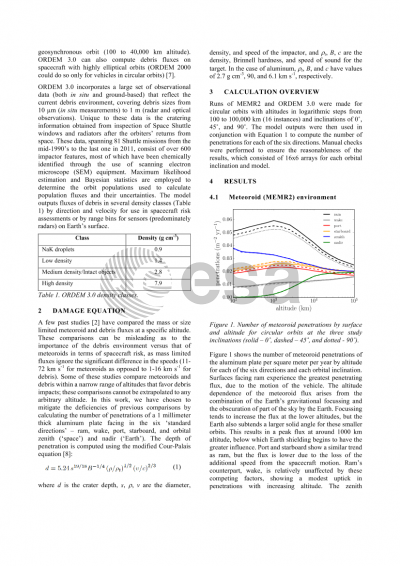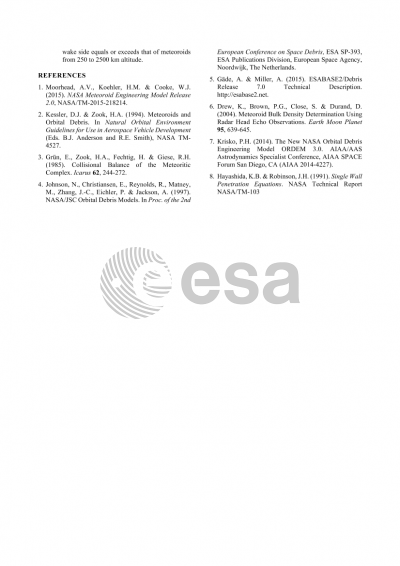Document details

Abstract
Low Earth orbit is populated with a substantial amount of orbital debris, and it is usually assumed that the flux from these objects contributes to most of the hypervelocity particle risk to spacecraft in this region. The meteoroid flux is known to be dominant at very low altitudes (<300 km), where atmospheric drag rapidly removes debris, and at very high altitudes (beyond geostationary), where debris is practically non-existent. The vagueness of these boundaries and repeated questions from spacecraft projects have prompted this work, in which we compare the fluxes of meteoroids and orbital debris capable of producing a millimeter-deep crater in aluminum for circular orbits with altitudes ranging from the top of the atmosphere to 100,000 km. The outputs from the latest NASA debris and meteoroid models, ORDEM 3.0 and MEMR2, are combined with the modified Cour-Palais ballistic limit equation to make a realistic evaluation of the damage-capable particle fluxes, thereby establishing the relative contributions of hazardous debris and meteoroids throughout near-Earth space.
Preview






